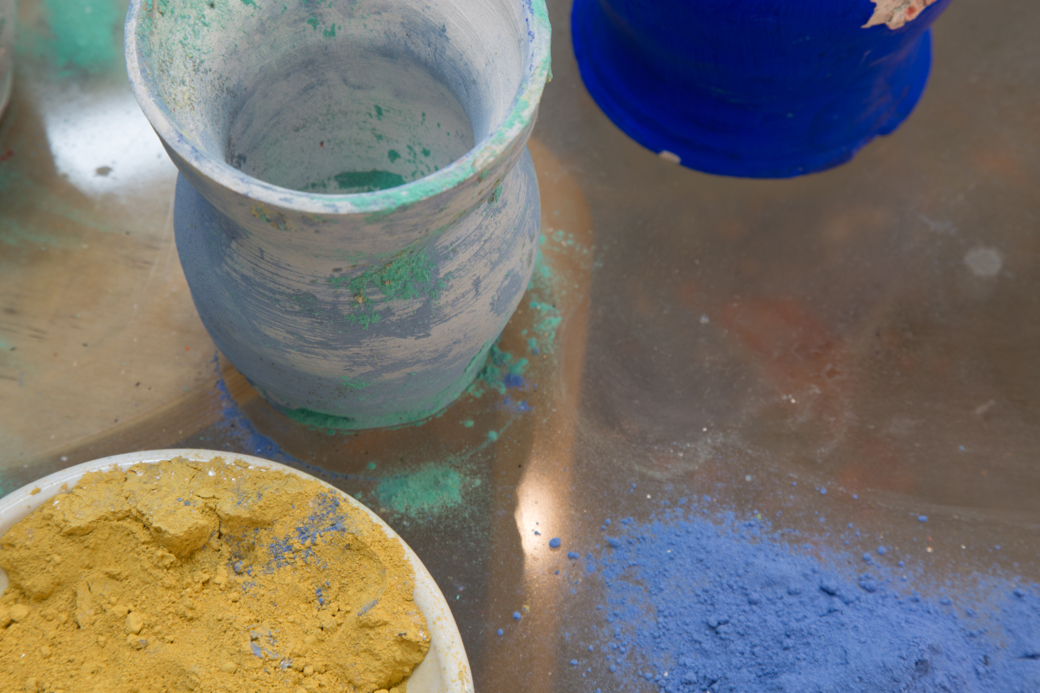
Carolyn Carr. Table from the Painter’s Studio, 1996-2016. Lizella Clay, artist glazes, natural and mineral pigments, wood, plaster, glass, 58″ x 28″ x 28″. © Carolyn Carr. Courtesy of the artist and Jackson Fine Art, Atlanta.
Feminist themes materialize in the works in Radical Plastic, the exhibition bringing to mind my initial exposure to feminism. In 1973, when I was an undergraduate art student, the sculptor Jane Kaufman was an artist-in-residence at my school for three weeks. Kaufman was one of the few women artists to have a solo show at the Whitney Museum of American Art in the early 1970s. She was both a leader in the Pattern and Decoration movement and a founding member of the early feminist art movement. At Florida International University, Kaufman encouraged us to empower ourselves through consciousness-raising meetings. Sharing frustrations about the misogynist attitudes that we encountered as students, artists, mothers, wives, and lesbians was pivotal for my identity as a feminist artist. The artists in Radical Plastic are part of this feminist-art legacy, even as they broker new strategies to explore current issues.
Opportunities for women have expanded in the past forty years, but gender parity remains as elusive as ever. The curator and writer Maura Reilly cited recent statistics in her essay, “Taking the Measure of Sexism: Facts, Figures, and Fixes,” for ARTnews in May 2015. Between 2007 and 2014, only 29 percent of solo shows at the Whitney Museum were of women artists. At the Museum of Modern Art in April 2015, only 7 percent of the works on display were by women. With sexism still flourishing in art-world politics, how are women artists responding today?
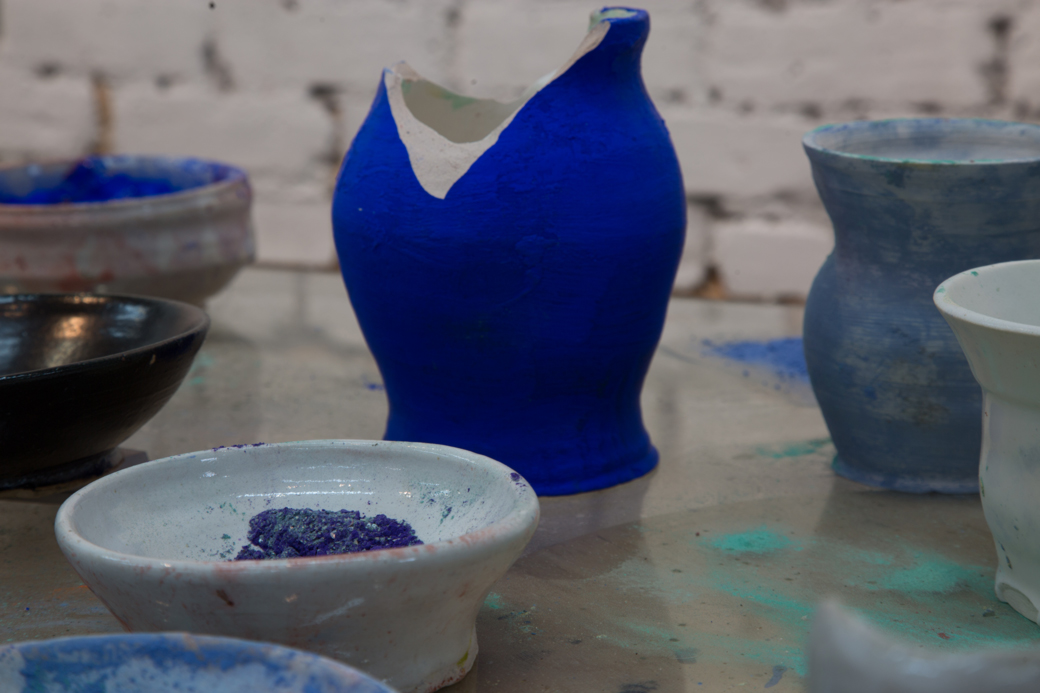
Carolyn Carr. Table from the Painter’s Studio, 1996-2016. Lizella Clay, artist glazes, natural and mineral pigments, wood, plaster, glass, 58″ x 28″ x 28″. © Carolyn Carr. Courtesy of the artist and Jackson Fine Art, Atlanta.
Radical Plastic, curated by Rachel Reese at the CUE Art Foundation, New York, works to answer this question. Reese, the associate curator of modern and contemporary art at the Telfair Museums in Savannah, Georgia, brings together artists ranging in age from the late twenties to the fifties—millennials, generation Xers, and baby-boomers. These artists explore subjects such as gender identity, domesticity, craft, and advertising. Their mediums include performance, sculpture, installation, graphic design, digital printing, assemblage, and video. Because of my personal history, I approached the show with an eye toward feminism’s past and with questions regarding its present and future: What feminist issues, if any, do these artists address? To what extent are issues about gender, autonomy, lifestyle, and domesticity covertly or overtly embedded in their practices? Are all-women exhibitions still necessary?
As it was in the past, to be a female artist today is to be political. The Radical Plastic artists Becca Albee, Ria Roberts, and Rachel Debuque directly speak to feminist issues through works based on personal history, consumer advertising, and gender identity. Their individual approaches take into account today’s shifting cultural landscape and make arguments for change.
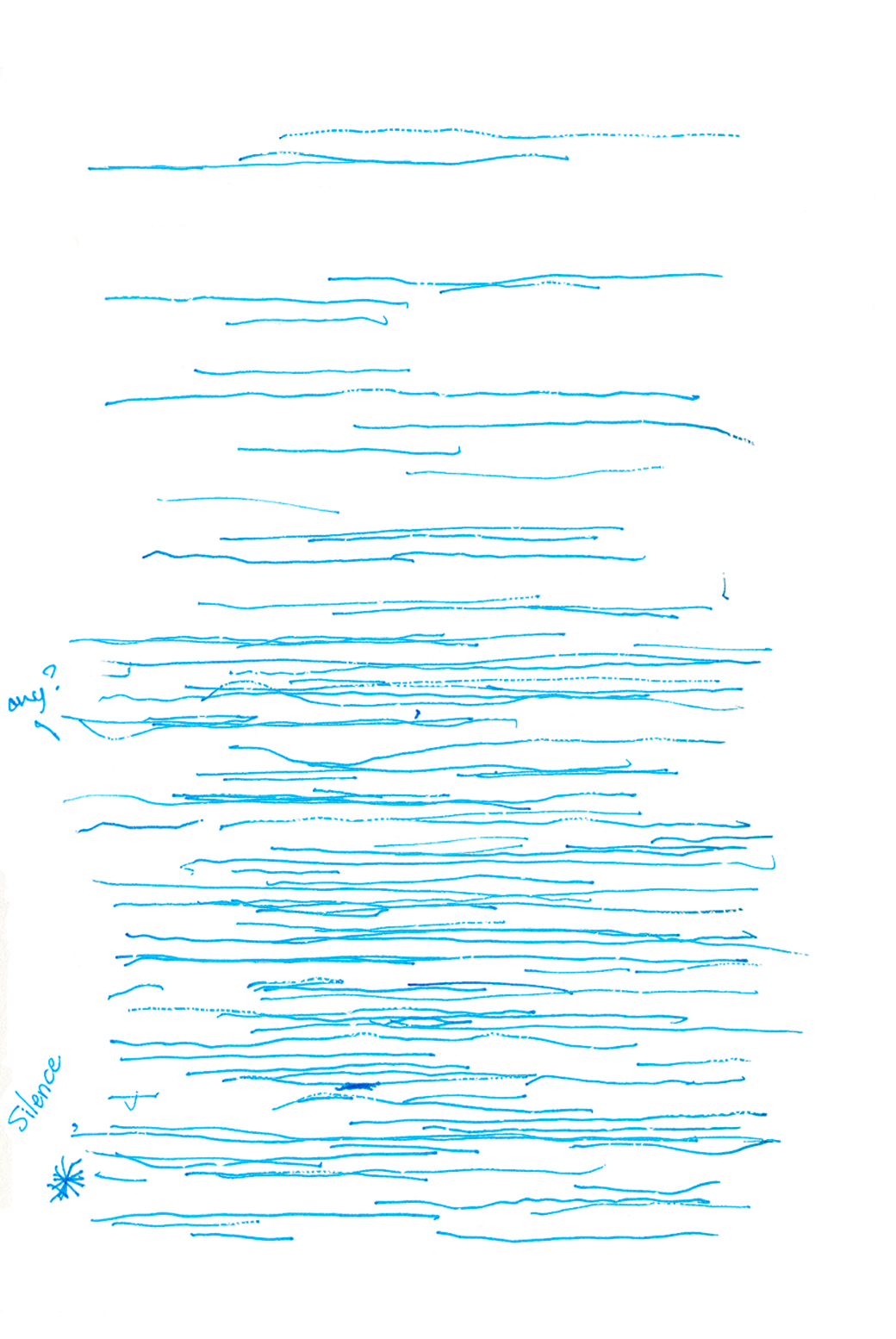
Becca Albee. Radical Feminist Therapy series, 2016. Letterpress prints and shadow-registered emboss on paper, 9” x 6”, unframed. This work was made possible with a Publicide Production Fellowship. © Becca Albee.
Becca Albee’s series, Radical Feminist Therapy (2016), was inspired by the underlined passages and notations she made in a book, Radical Feminist Therapy: Working in the Context of Violence by Bonnie Burstow, which she read in undergraduate school. For this work, the artist scanned each annotated page and then removed the printed text, leaving only her handwritten marks. Collapsing the scanned pages into fifteen chapters, Albee deconstructs the original treatise while creating an inscrutable visual archive of her earlier thinking. The compounded blue lines and scribbled words remain the singular evidence of her experience and suggest her internalization of the author’s thesis. Albee’s revisionist work reshapes reactionary feminism into a subtler political statement.
The editor and designer Ria Roberts takes aim at the commercial advertising industry by creating what she calls “lifestyle magazines for realists,” using the tropes of graphic design to counter certain fictions and suggest an alternate reality. One of her publications featured in this exhibition is devoted entirely to sweat: Oikos Issue 2 (2016) focuses on the occurrences of this body fluid brought by anxiety, sex, work, or exercise and includes an interview in a sauna. Confronting the constructed fictions presented by popular lifestyle magazines, Roberts pitches a lifestyle aligned with realistic expectations. Taking a humorous approach, Methods Issue 3 (2016), co-edited by Erin Knutson, is devoted to the subject of contraception. Roberts invited artist friends and designers to create advertisements and essays on reproductive rights. Countering the popular media’s tactics that play to women’s desires to love and be loved, the content is drafted as a democratic sexuality, in a conversation about intimate lives.
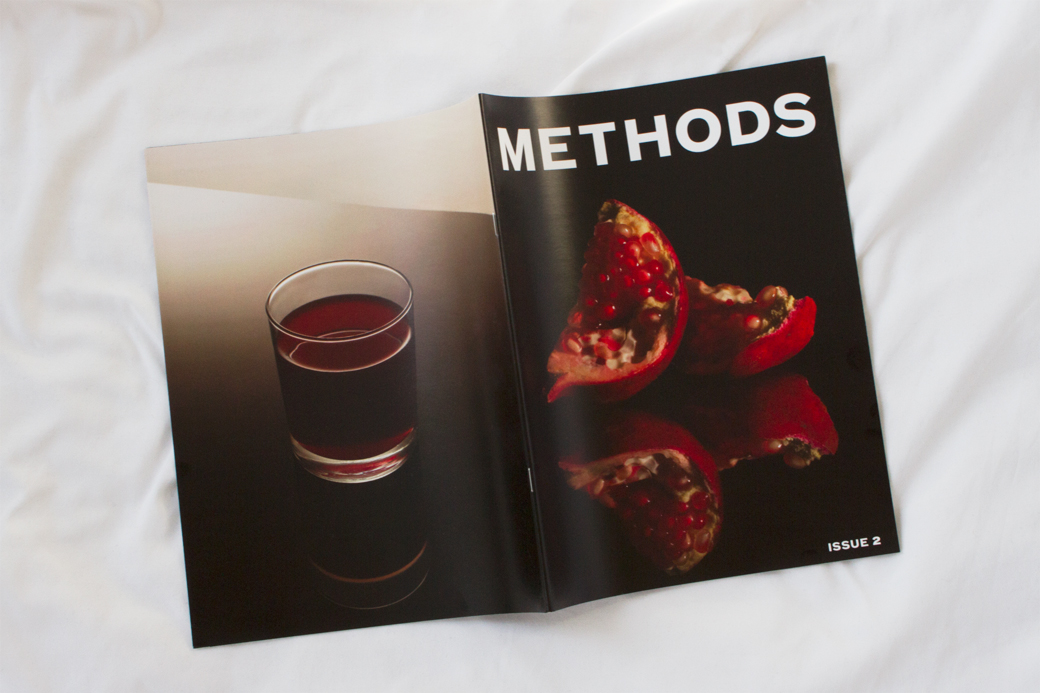
Methods, Issue 2, 2015. Publication, edited by Ria Roberts & Erin Knutson. Approx. 8.5″ x 11″. © Leisure Press.
Gender identity is undermined by Rachel Debuque’s Glisten (2016), a performance installation in which an androgynous female bodybuilder completes a workout routine while a woman depicted in a video monitor encourages her to push her physical limits. The radical concept of gender fluidity is at the core of Debuque’s project. The work questions how we define ourselves as gendered beings and the relative inclusivity of the definition of female. The performance argues that socially constructed gender roles are malleable and that boundaries can be extended to include alternatives to binary categories.
Domesticity, a major source of content for second-wave feminists working in the 1960s and ’70s, resurfaces with a new twist in the works of Michelle Grabner and Carolyn Carr. Originally inspired by the paper weavings her son brought home from school, Grabner’s vernacular works transmit the beauty of the colors and textures of commercially produced gingham fabric, a pattern from eighteenth-century England. The high-resolution photographs in the exhibition measure 30-by-24 inches and provide a close-up view of the intricacy of the woven grid and the play of color, light, and space. As artifacts of the artist’s lifelong interest in repetition, patterning, and mark making, these digital images conflate the past with the present in an objective display of visual pleasure.
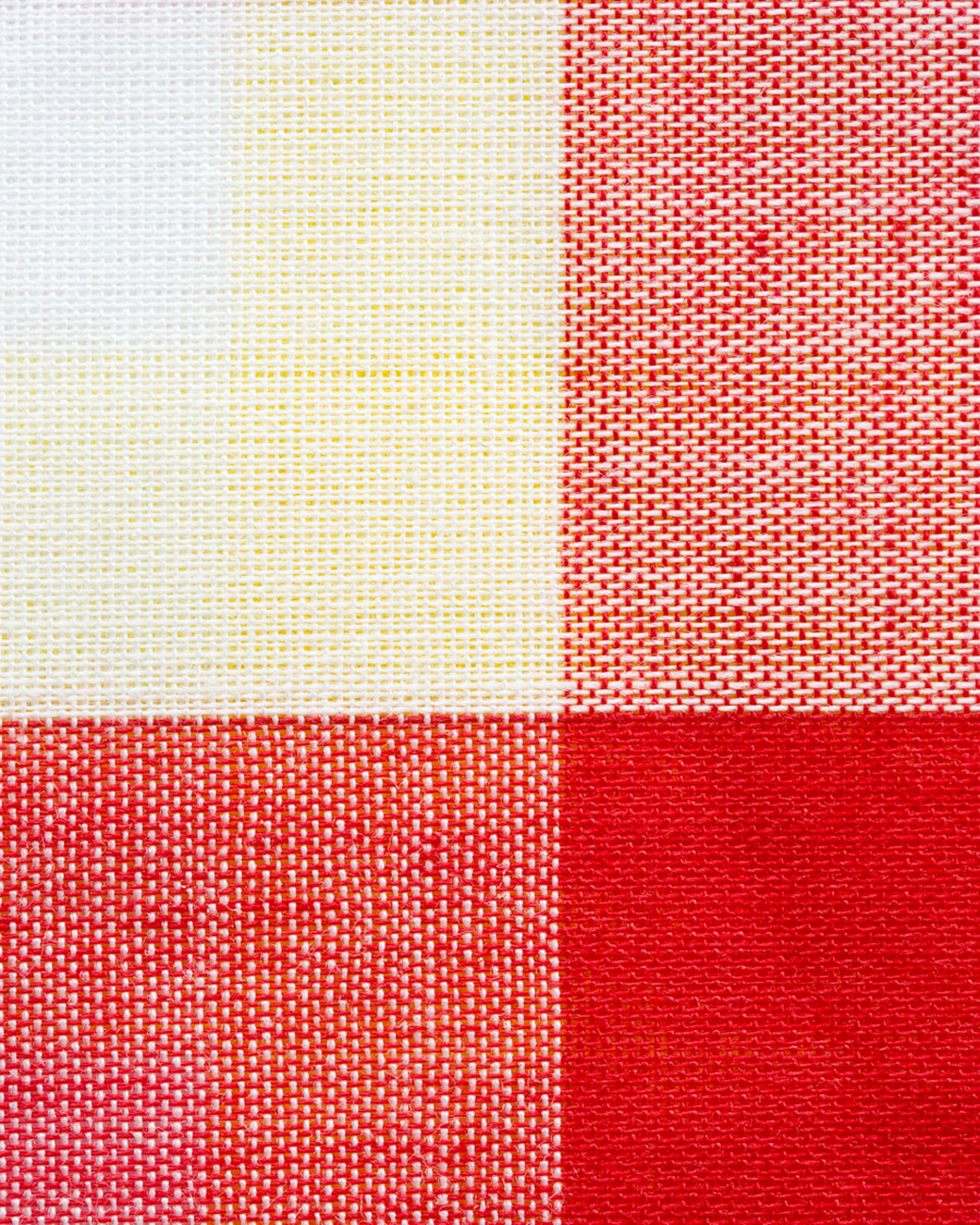
Michelle Grabner . Untitled, 2014 . Ed. 1/1 AP. Archival inkjet print, 30″ x 24″. © Michelle Grabner. Courtesy of James Cohan, New York.
Carolyn Carr creates fictional environments in which the past, the present, and the influences of powerful women intermingle. After reading Virginia Wolfe’s A Room of One’s Own, the artist was inspired to develop a way to shape her own creative life. In Carr’s installation, Table from the Painter’s Studio (1996–2016), a large table-top structure serves as the artist’s worktable. On it, ceramic pots, cups, saucers, and bowls are strewn about. Organic and mineral pigments spill out of the vessels and onto the table: it’s a palette for either an alchemist or an artist and suggests transformation. In this messy tableau, Carr’s search for structure embraces the experimental chaos of the artist’s studio. Wolfe’s journey is mirrored in Carr’s willingness to take risks, to revise, and to succeed on her own terms.
Through provocative methodologies, the artists in Radical Plastic ask the viewer to consider the mutable conditions of identity, gender, the body, and the environment. While not all the artists in the exhibition address feminist issues directly or identify as feminists, their distinctive experiences and commentaries as women are important to the art-historical record. Until women achieve parity in the art world, there continues to be a need for all-women exhibitions, as part of a larger need to recognize all marginalized artists.
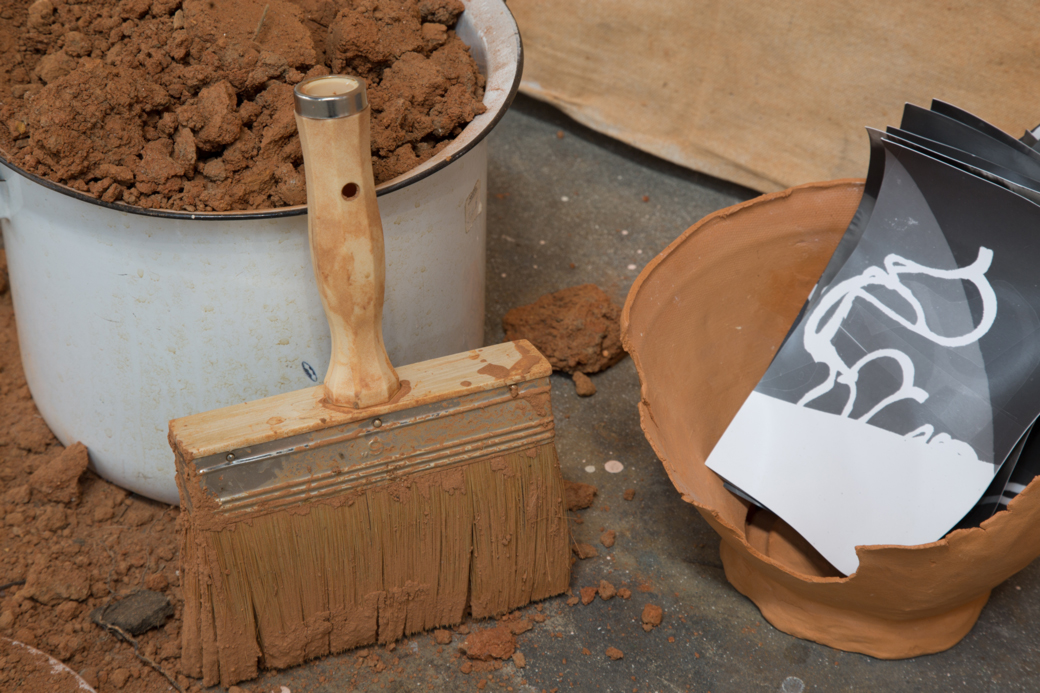
Carolyn Carr, A Photographer’s Studio and the Problems of Posing (in progress image), 1978-2016. Hand-built vessels made of Georgia red clay, pine beam, shutters, van dyke, cyanotype, silver gelatin print, painter’s brush, canvas, tin pitcher, stoneware butter churn, bench, painting, installation dimensions variable. © Carolyn Carr. Courtesy of the artist and Jackson Fine Art, Atlanta.
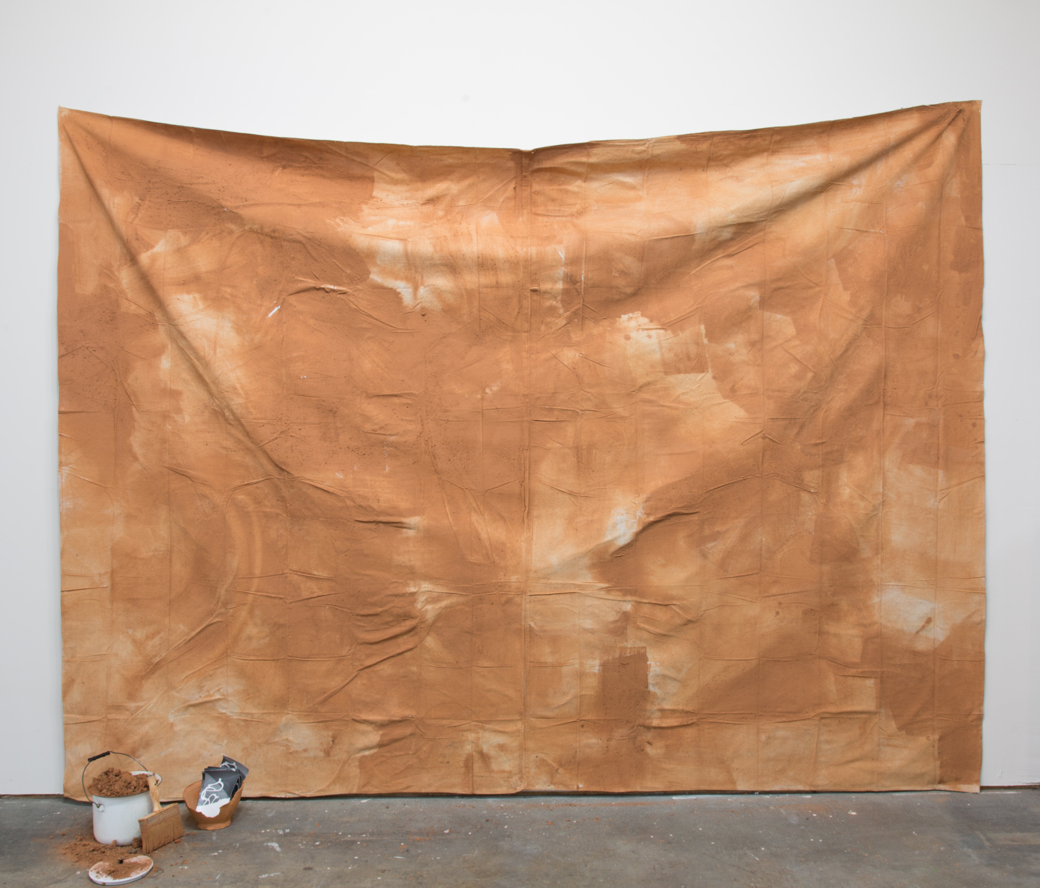
Carolyn Carr, A Photographer’s Studio and the Problems of Posing (in progress image), 1978-2016. Hand-built vessels made of Georgia red clay, pine beam, shutters, van dyke, cyanotype, silver gelatin print, painter’s brush, canvas, tin pitcher, stoneware butter churn, bench, painting, installation dimensions variable. © Carolyn Carr. Courtesy of the artist and Jackson Fine Art, Atlanta.
Editor’s note: This essay was written by the ART21/CUE Writer-in-Residence in conjunction with the exhibition Radical Plastic, on view at CUE Art Foundation July 16 – August 20, 2016. This text is included in the free exhibition catalogue available at CUE.
The ART21 + CUE Writing Fellowship provides each writer with a mentor, an established art critic appointed by the International Association of Art Critics USA Mentoring Committee. Davis worked with the art critic Lilly Lampe.



